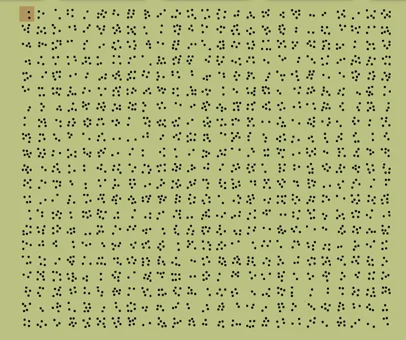Have you been invited to take a concentration test? Concentration tests are a special type of test designed to assess how well you can focus on a repetitive, routine, but ultimately very important task. Learn more about these types of tests with JobTestPrep.
- Group Bourdon-style tests
- Full answers and score reports
- Study guide
About a dozen companies across the UK, including Govia Thameslink Railway, have incorporated concentration tests into their hiring processes.
We are going to take a look at the principles behind the test for attention and concentration in general and better understand the dynamics of the Group Bourdon test specifically.
Whether you are applying to Govia Thameslink Railway or any other transportation company, our Concentration Test PrepPack will provide you with all the tools you need to pass and get the job you want.
Are you ready? Let's take a look!
What Is a Concentration Test?
A concentration test evaluates how well you can focus on a task even whilst there are distractions around you.
Some jobs require you to be able to concentrate hard at all times - even when you are tired, bored, or distracted. They are especially important for jobs where it is crucial that you don’t make mistakes: including administration and clerical positions, pilots, or most commonly train drivers and other railway workers.
For example, while driving might sound like a simple task, one that we all do daily, few of us do it all day long. Being on the road or tracks for such a long period can become monotonous and challenge our ability to concentrate and focus. Therefore, many transportation companies have included a concentration test.
So, ok, the test measures your ability to focus, but what are some of the qualities judged.
- Alertness: Being alert in this line of work is super important,
- Assessment: The ability to assess a problem is key to finding a solution.
- Attention: As they say, the devils in the details, you cannot miss a beat.
- Organization: Those who are not focused are generally "scatterbrains" and less productive.
- Outlook: Looking at something from a variety of perspectives shows mental flexibility.
- Verbal reasoning: people with executive functions tend to be more eloquent and articulate.
So, now that you have an idea of the overall concept of the concentration test let's take a look at the Group Bourdon test.
Group Bourdon
Let's start with an explanation of the Group Bourdon test, and then briefly explain how it is graded.
Test Details
First, it's important to mention that this test will be administered either on paper or electronically on a computer, so it's important to be ready for both scenarios.
You will be presented with five sheets of multiple boxes of dots or letters, you will have 2 minutes per sheet, for a total of 10 minutes.
Every page will contain 21 rows containing 25 groupings each. Each grouping of dots or letters can range from 2-6, and you will be tasked with finding grouping of four throughout the page. Ever heard the idiom "finding a needle in a haystack?" Well, this is sort of like finding a needle in a stack of needles – it takes practice.
Moreover, as the test progresses, your ability to concentrate will weaken, which is the entire point of the exercise.
Test Grade Metrics
There are three primary metrics, and our accurate practice test covers every element.
- Accuracy
Checking for accuracy is actually broken down into two distinct metrics.
- Omissions: These are grouping that you may have missed to mark.
- Incorrect answers: These are groupings you got wrong. It's important to note that wrong answers are held against you.
- Time
You will next be graded on the total number of clicks made during the allotted 10 minutes on the test. It will take into consideration the total number of cells. While speed is essential, it should not come at the expense of accuracy, as every wrong answer is a point against you.
- Consistency
Aside from looking at the overall speed at which you worked, you will also be tested to ensure that you kept a good pace.
JobTestPrep’s Group Bourdon PrepPack™
As you can see, this test is no simple feat.
Our PrepPack™ will fully prep you to pass every segment of the test by allowing you to practice under real test conditions, both in time and format.
Look at the following sample question, to get a sneak peek.
Dot Groupings:

Grouping to look for:




